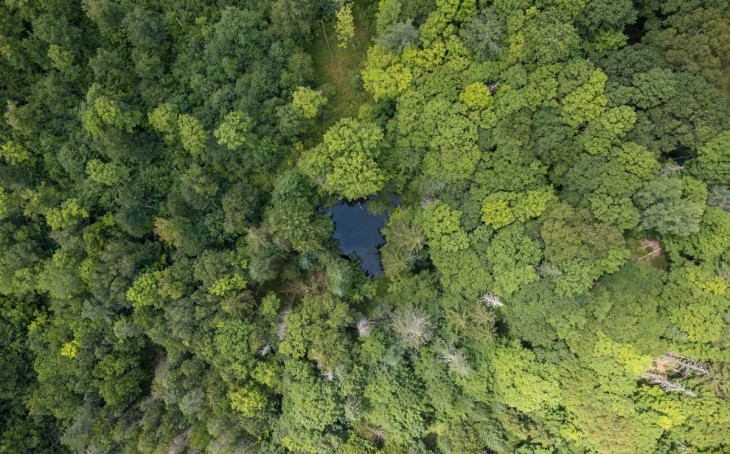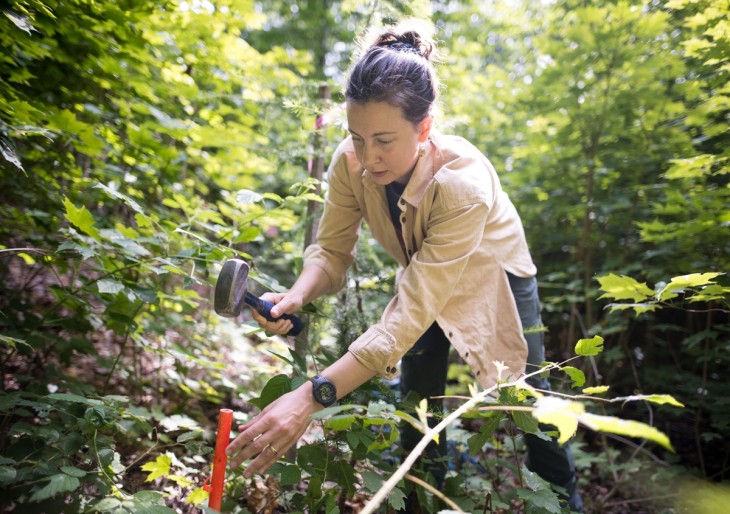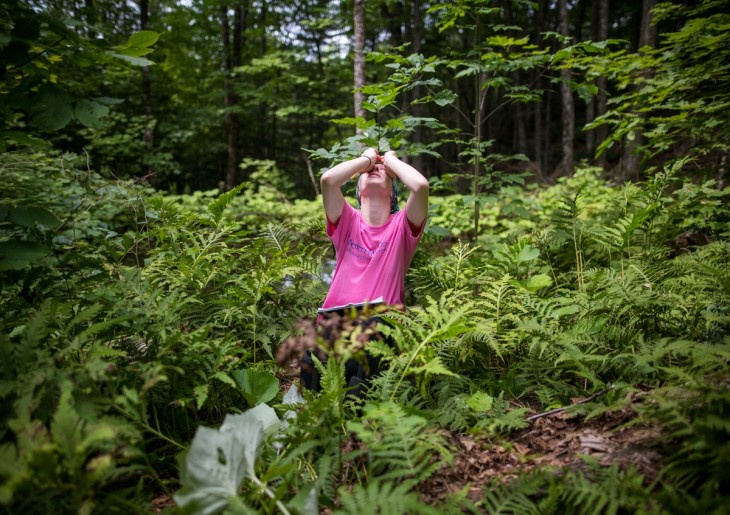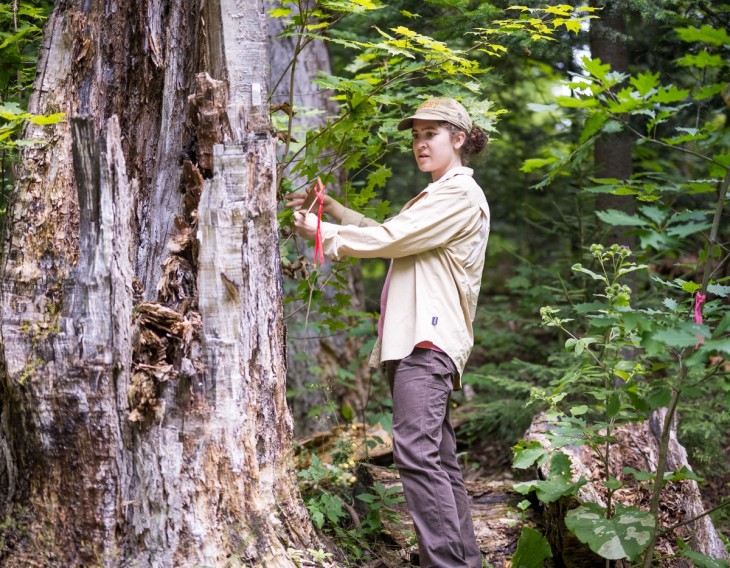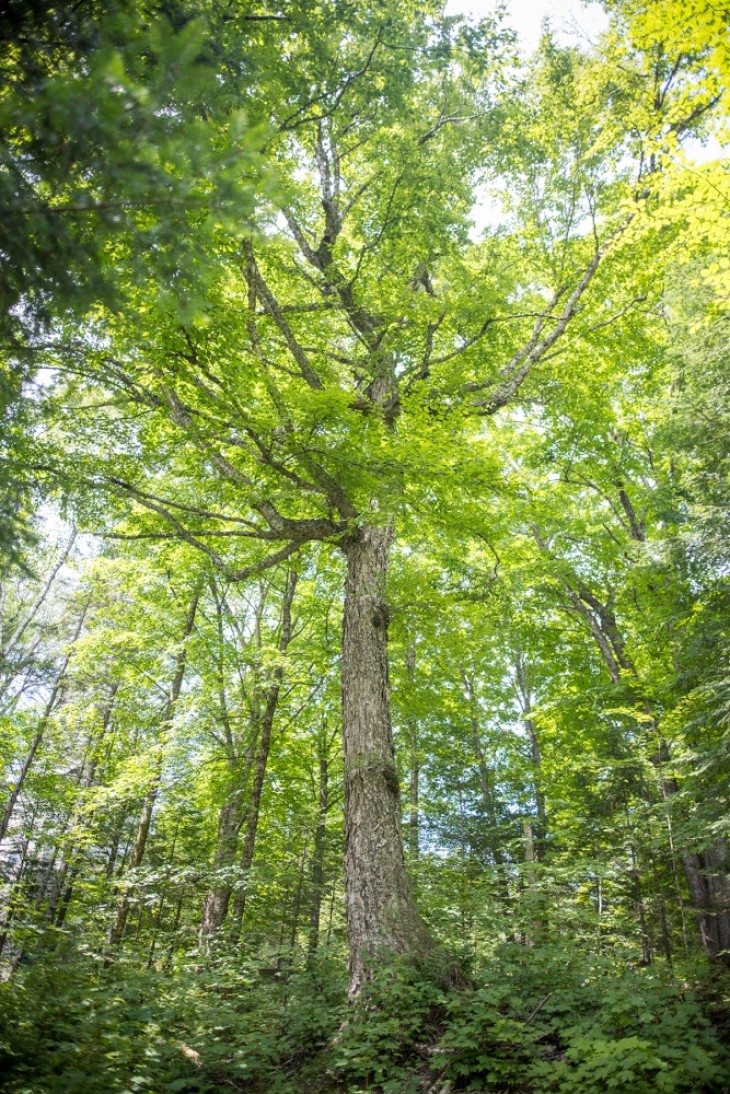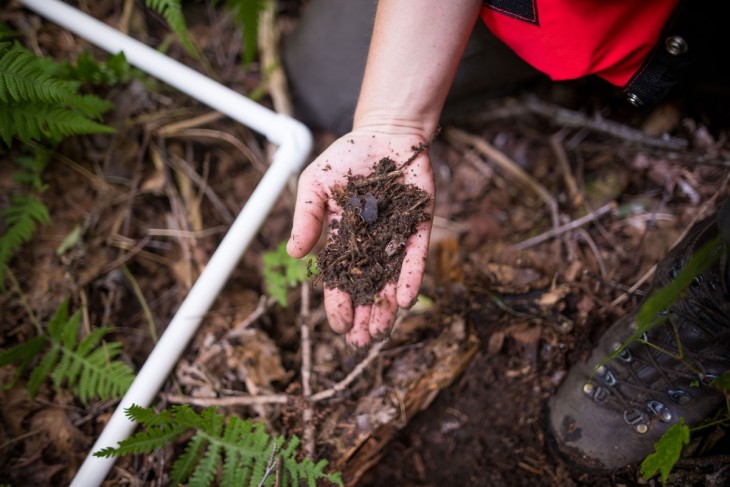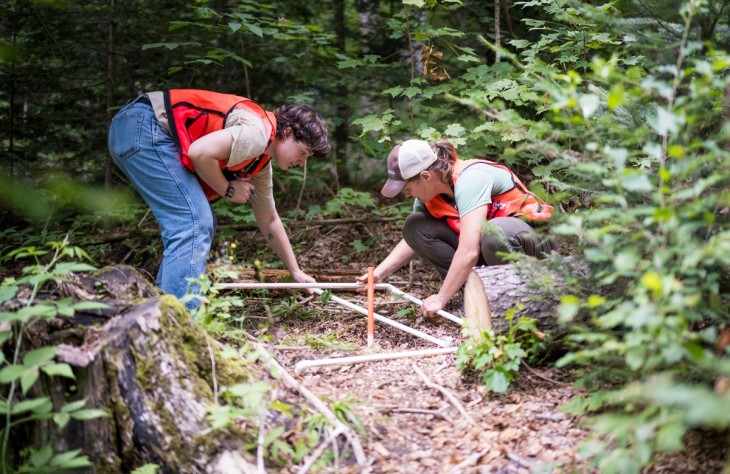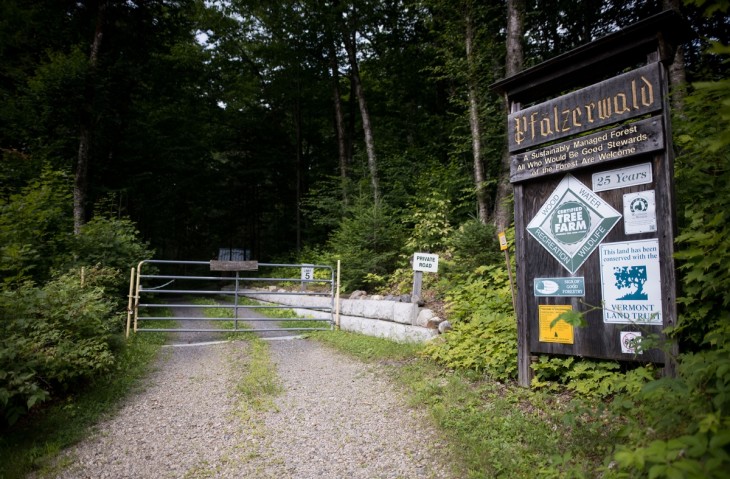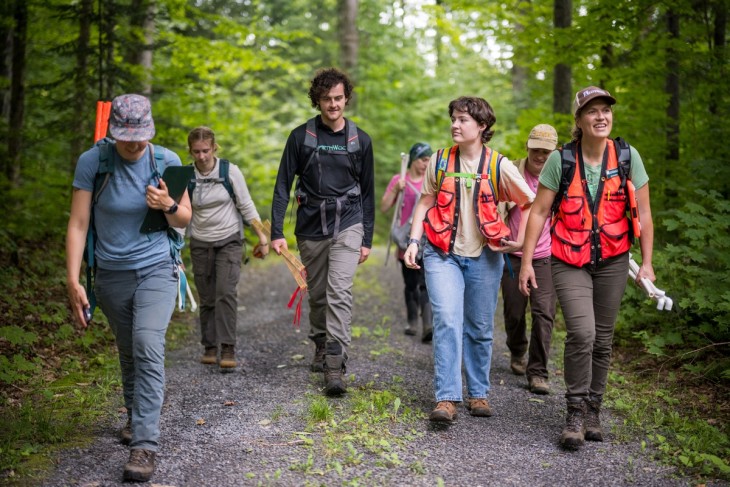
This past summer, University of Vermont Extension Assistant Professor Alexandra Kosiba collaborated with the NorthWoods Stewardship Center to establish climate resilience monitoring plots at a privately-owned forest in Sheffield, Vermont. The project is part of Kosiba’s effort to establish permanent monitoring plots on forestland across Vermont to examine how active management affects forests’ capacity to recover from disturbances and to remain ecologically healthy. The goal is to track the long-term outcomes of resilience-focused forest management.
To observe the effectiveness of this management over time, monitoring plots are set up in pairs. Treatment plots are located in an area of recent forest management aimed at increasing the resilience of the forest, while control plots are in an adjacent area not recently managed. In each plot, the crew measures and catalogs the trees and plants in the over- and understory, including standing dead and downed trees. They also note the presence of invasive species and other forest health issues.
“The gist of the measurements is to capture the composition and structure of the forest in each plot,” said Kosiba. “These plots will be revisited in the future and remeasured to quantify how the forest composition and structure have changed. If there is a climate-related or other disturbance, we can examine how the response of that disturbance or stress differed between the plots.”
These photographs depict Kosiba and the NorthWoods group establishing four pairs of plots at Al Robertson’s Pfälzerwald Tree Farm. Robertson has practiced ecological forest management at this 60-acre forest since purchasing the land in 1979, and he has created a trust to bequeath the property to Sheffield to use as a town forest. His stewardship of the land is inspired by German silvicultural practice, and he has worked to enhance the resilience of his woods by increasing tree species and age diversity, including planting new tree species that may be better adapted to a future climate. (To learn more about Robertson’s stewardship goals, check out our November 16, 2022 Community Voices interview.)
“We’re so fortunate to have forest landowners in Vermont like Al who care deeply about their land,” Kosiba said. “Thanks to Al, this property offers the opportunity to continue to observe the impacts of resilience-focused forest management into the future.”
If you are a Vermont landowner engaging in climate-focused management and interested in allowing UVM Extension to establish forest monitoring plots, please reach out to Alexandra Kosiba.
